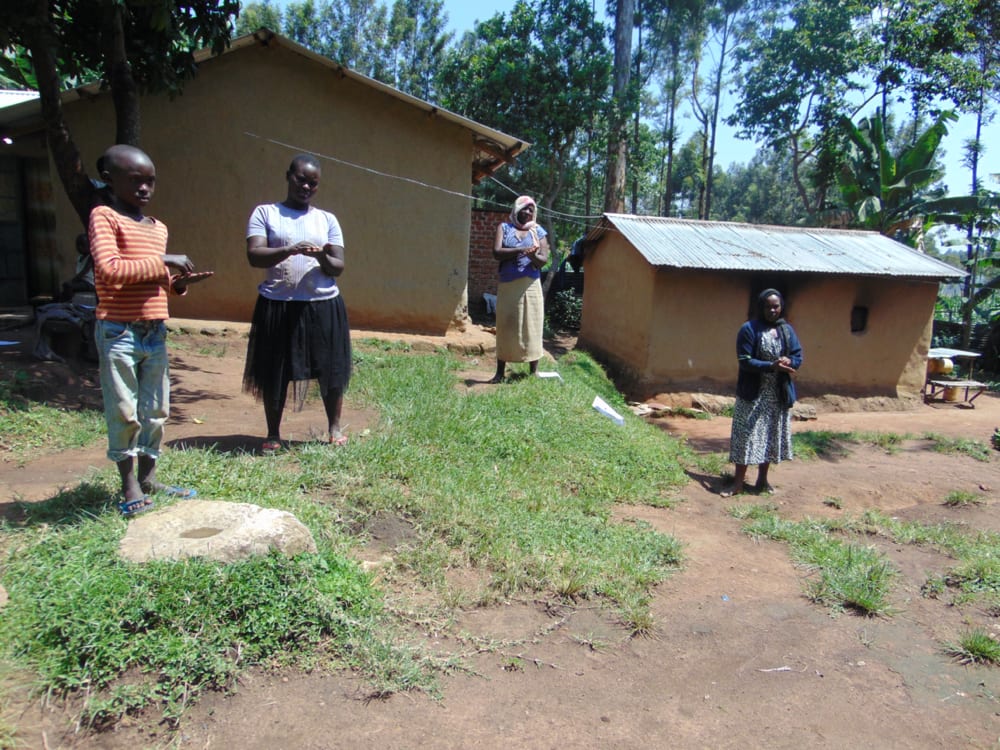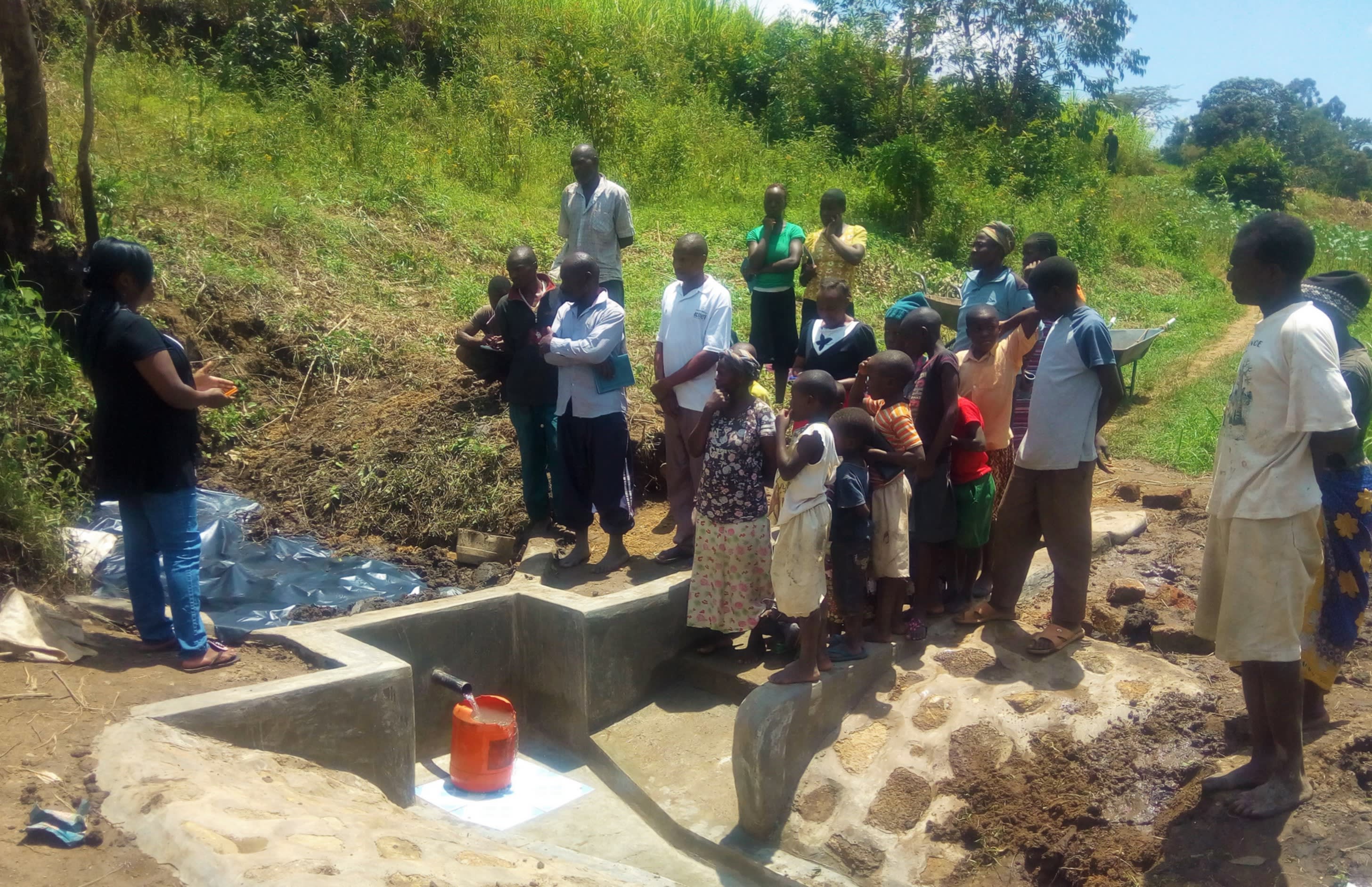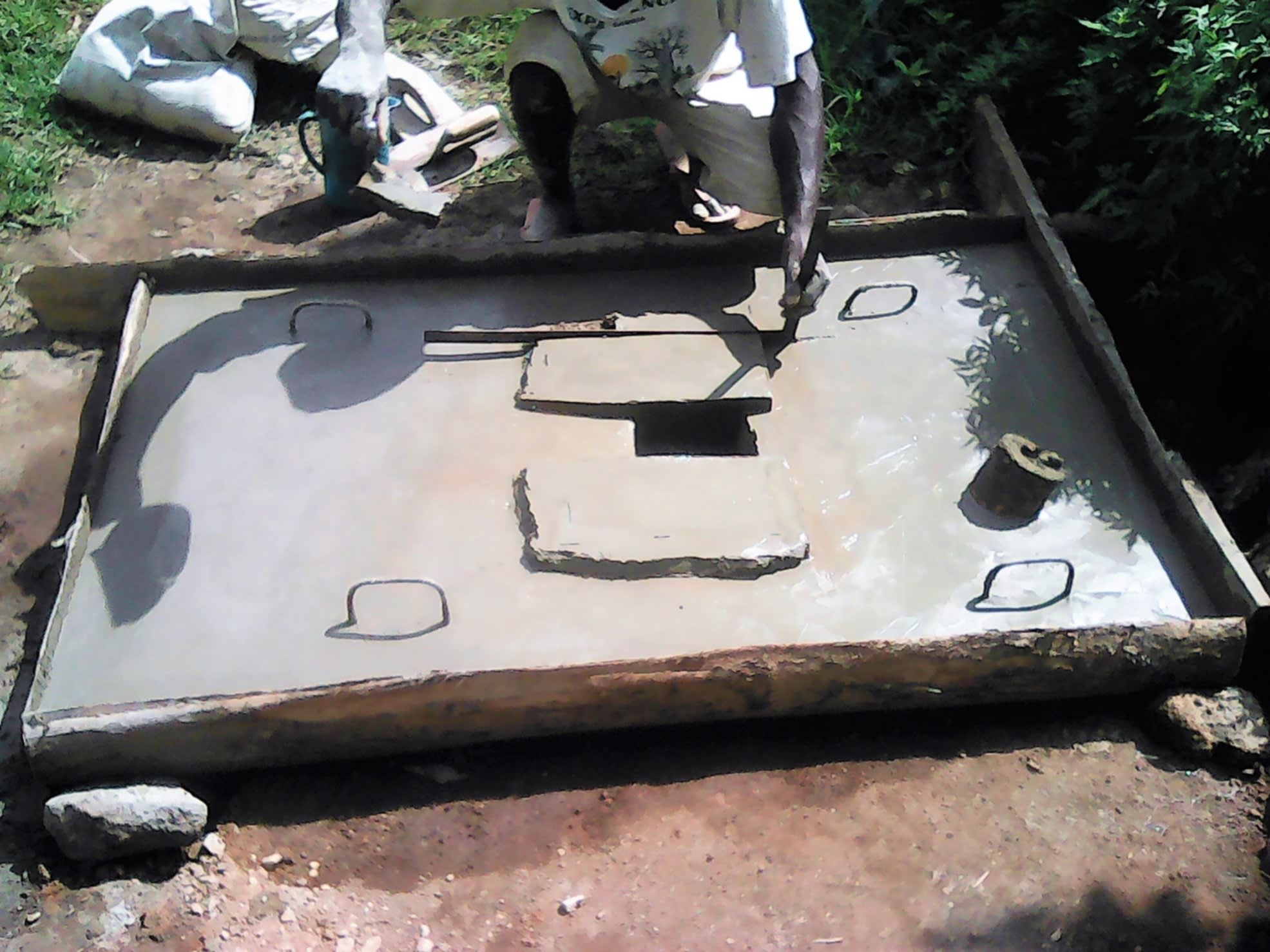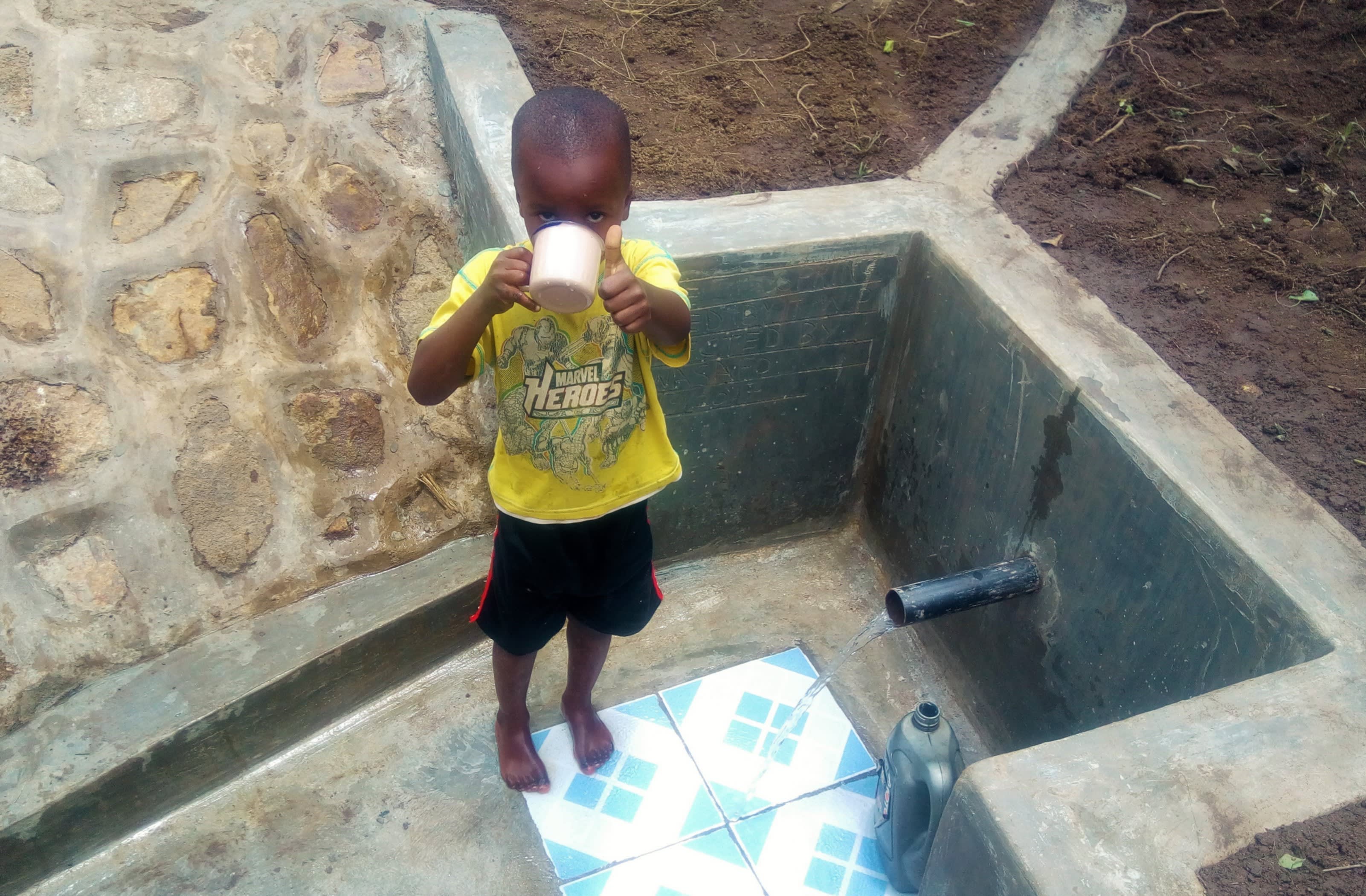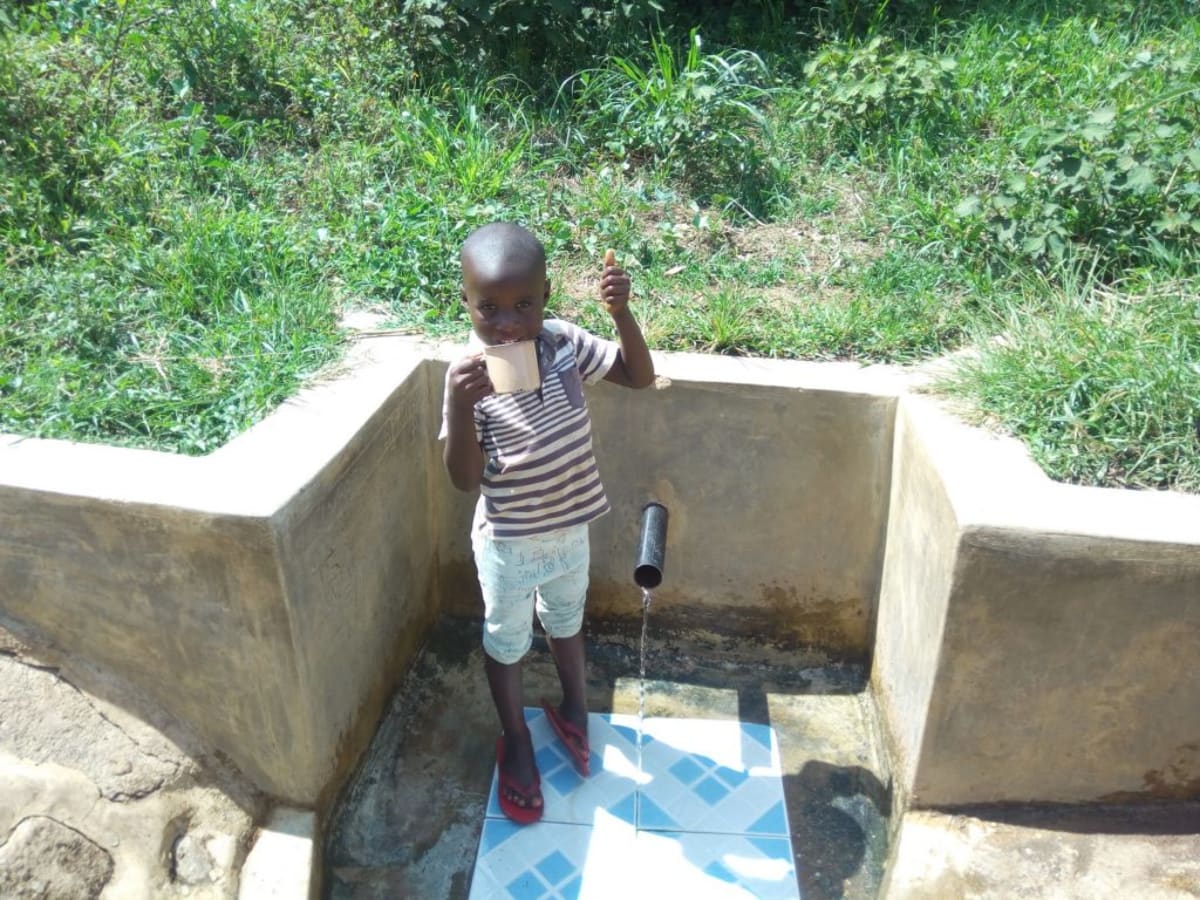This project is a part of our shared program with Western Water and Sanitation Forum (WEWASAFO). Our team is pleased to directly share the below report (edited for clarity, as needed).
Welcome to the Community
Members of Ebung'ayo Community rely on farming as a way to meet their daily needs. A normal day begins with routine household chores for women, and men attending to their farms. If there isn't anything left to do on the farm, they look for any other means of earning income. Most of the homes here brew alcohol, resulting in a high rate of alcoholism, especially in men.
Water Situation
Wycliff Spring is one of the main sources of water for people living in Ebung'ayo.
The spring serves over 43 households. The water is used for domestic purposes such as drinking, cooking, washing, watering animals and irrigating farms during dry seasons. During these dry seasons the population using the spring increases greatly, for many other springs in the area dry up.
Ebung’ayo Village is already highly populated with a total number of 301 community members. During the dry seasons, the community is involved in conflicts since everyone wants to fetch water at the same times, and the more people who use it, the dirtier it gets. Some members who wish to embrace peace even when resources are scarce fetch water during the middle of the night.
Containers are immersed into the water at the spring, or a small cup is used to bail water into larger containers. Wycliff Spring is open to contamination from human and animal activity, and is particularly contaminated during and after the rains that wash waste straight into the water.
It was also reported that the community battles waterborne diseases like diarrhea and typhoid as a result of using contaminated water from Wycliff Spring. "As a community we have battled for so long with issues of health and sanitation which is majorly caused by the use of contaminated water. My family inclusive of me, have used massive resources to treat recurring diseases that are brought about by the same condition," Mr. Wycliff shared.
Sanitation Situation
Sanitation standards are low, because most of the families in the area lack proper latrines, bathing rooms, dish racks, and clotheslines. When asked about these things, it became clear that there's an overall lack of knowledge on hygiene and sanitation practices in Ebung'ayo.
Plans: Hygiene and Sanitation Training
Community members will attend hygiene and sanitation training for at least three days. This training will ensure participants are no longer ignorant about healthy practices and their importance. The facilitator plans to use PHAST (Participatory Hygiene and Sanitation Transformation), CLTS (Community-Led Total Sanitation), ABCD (Asset-Based Community Development), group discussions, handouts, and demonstrations at the spring.
Training will also result in the formation of a committee that will oversee operations and maintenance at the spring. They will enforce proper behavior around the spring and delegate tasks that will help preserve the site, such as building a fence and digging proper drainage.
Plans: Sanitation Platforms
On the final day of training, participants will select five families that should benefit from new latrines.
Training will also inform the community and selected families on what they need to contribute to make this project a success. They must mobilize locally available materials, such as bricks, clean sand, hardcore, and ballast. The five families must prepare by sinking a pit for the sanitation platforms to be placed over. All community members must work together to make sure that accommodations and food are always provided for the work teams.
Plans: Spring Protection
Fetching water is predominantly a female role, done by both women and young girls. Protecting the spring and offering training and support will therefore help empower the female members of the community by giving them more time and efforts to engage and invest in income-generating activities.
In addition, protecting the spring will ensure that the water is safe, adequate and secure. Construction will keep surface runoff and other contaminants out of the water.

 Protected Spring
Protected Spring
 Rehabilitation Project
Rehabilitation Project














